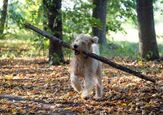We often see conversations among cat and dog parents about the challenges of grooming, but as any small animal lover can tell you, they aren’t the only ones struggling with this basic care need. Guinea pigs are incredibly delicate, and the thought of causing them stress or discomfort during grooming can make the task feel nearly impossible. But it doesn’t have to be “mission impossible.” Instead, I encourage you to reframe your thoughts about this process and your go-to routines. Grooming isn’t just about keeping your piggy looking Instagram-worthy; it’s a key step in keeping them happy and healthy. Neglecting these tasks can lead to a host of issues, from painful, overgrown nails to skin problems caused by matter fur and trapped debris. In this post, I’m going to help you shift you create a more comfortable and stress-free grooming experience for your guinea pig, maybe even creating some special bonding time! I’ll share gentle techniques and tips to reduce anxiety, making the grooming process smoother and less daunting. Understanding Your Guinea Pig's Grooming Needs: A Head-to-Toe GuideI want to stress again that grooming your guinea pig is more than just a beauty treatment. These aren’t tasks that should be skipped just because they are difficult or your piggy seems uninterested in the process. Each aspect of a guinea pig’s grooming plays a vital role in their overall comfort and well-being, and understanding these needs is the first step toward creating a better process for everyone involved. Nail Care Like our nails, your guinea pig’s nails are constantly growing. They would naturally wear them down in the wild by running on rough terrain and varying surfaces. However, in a domestic situation where they spend their lives in a cage or pen, this natural wear doesn’t happen enough to keep up with the growth. This makes regular trimming essential. Overgrown nails can curl under, causing pain and discomfort making it difficult for your guinea pig to walk properly. In severe cases, they can even grow into the soft pads of their feet, causing significant distress and opening the door for potential infections. How often you need to trim their nails will vary from one guinea pig to the next, depending on their usual growth rate, the type of bedding they have, and the surfaces they are allowed to explore on a day-to-day basis. However, you can expect to trim them approximately once every 4 to 8 weeks. You’ll need a pair of guinea pig nail clippers to tackle this task. These come in two main styles: scissor and guillotine. Each style has pros and cons, and there is no “best” option for every situation. Instead, choose the tool that you are most comfortable and confident using. It’s also crucial to have styptic powder on hand. This powder works to help quickly stop bleeding if you accidentally cut the quick (the pink part of the nail that contains blood vessels and nerves). To use it, apply a small pinch of the powder to the bleeding nail with a clean finger or cotton swab and then apply gentle pressure. Making it Less Stressful: The secret to stress-free nail trims is gentle handling, a calm environment, and gradual desensitization. Start by getting your guinea pig comfortable with being held. Always support their body to ensure they feel secure. When preparing to cut your piggy’s nails, take a moment to find or create a quiet space to keep stress levels down and avoid being startled. When clipping the nails, you want to avoid cutting the quick. If your piggy has light or clear nails, only cut the clear part of the nail and avoid the pink area. If they have dark nails, this can be trickier. A bright light underneath their foot can help you see the quick easier as it forms a darker shadow. Don’t try to tackle all the nails at once. Instead, pay attention to your guinea pig’s signs of stress or anxiety, taking a break when they appear uncomfortable. You can always try again later. The first couple of times, this may simply be touching the clippers to their foot without even accomplishing any actual nail trimming, and that’s okay, too!Finally, desensitization is key. Regularly handle their feet, gently touching and wiggling the toes, even when it’s not trimming time. This will help them become more comfortable with having their feet touched. Introduce the clippers slowly in a similar way. Use their favorite treats to create a positive association, making the nail trim process less stress-inducing. Coat CareGuinea pigs come in various coat types, including short, smooth, long, flowing, and even curly! Your piggy’s needs are going to vary significantly depending on their fur. But, regardless of the length, regular brushing is always essential. This helps remove loose fur, preventing them from ingesting too much while self-grooming, which can lead to digestive issues. For long-haired piggies, brushing is even more critical as it helps to prevent painful mats from forming. As the mats become tighter, they can restrict movement, trap dirt and moisture, and even cause skin infections. Brushing also stimulates blood circulation, contributing to a healthy and shiny coat. Not only will your piggy look good, but they’ll also feel good! The tools you’ll need will depend on their coat type. A soft bristle brush is usually sufficient if your guinea pig has shorter hair. However, if they have longer hair, you’ll need a wider-toothed comb to gently detangle and a finer-toothed comb to remove loose fur (or one that offers two different sides to address both needs). Making it Less Stressful: Just like nail trimming, gentle, slow movements are the key to success when brushing or combing your guinea pig. Always brush in the direction of their hair growth, not against it. Hold them securely but comfortably on your lap or a stable surface, making them feel safe. If the table you are working on is slippery, consider using a small mat or towel to ease any fears. Keep brushing sessions short and positive, especially when first introducing it. Use high-value treats as a distraction and reward, making it a positive experience. Start introducing brushing as early as possible so they can become accustomed to it.

























